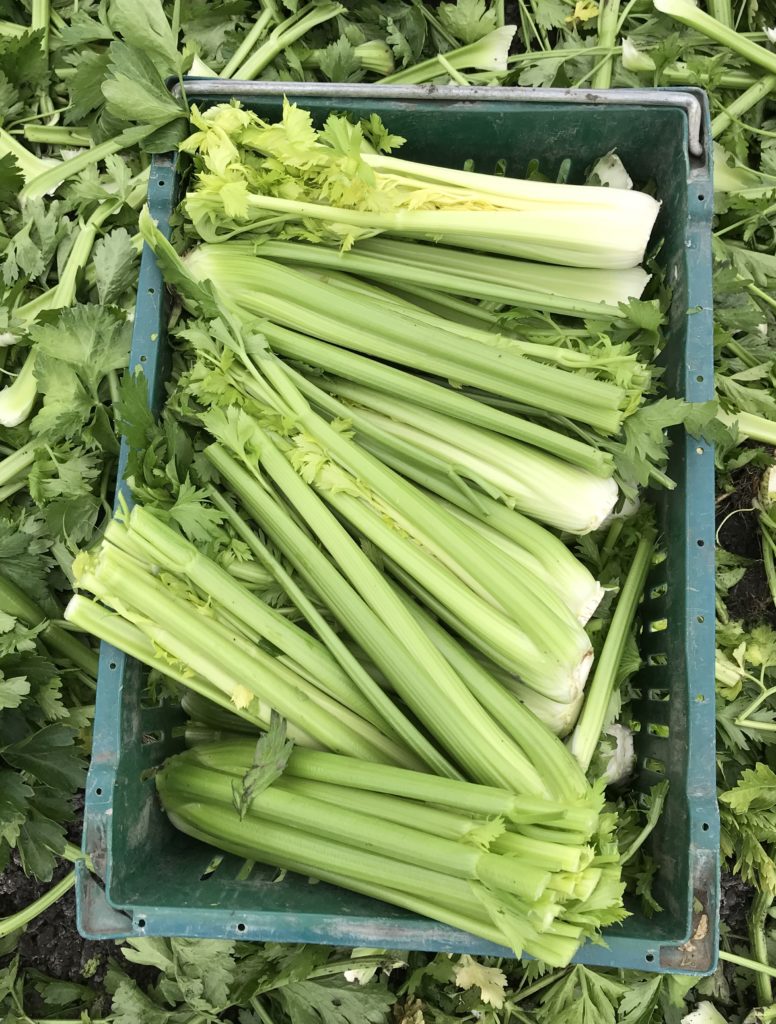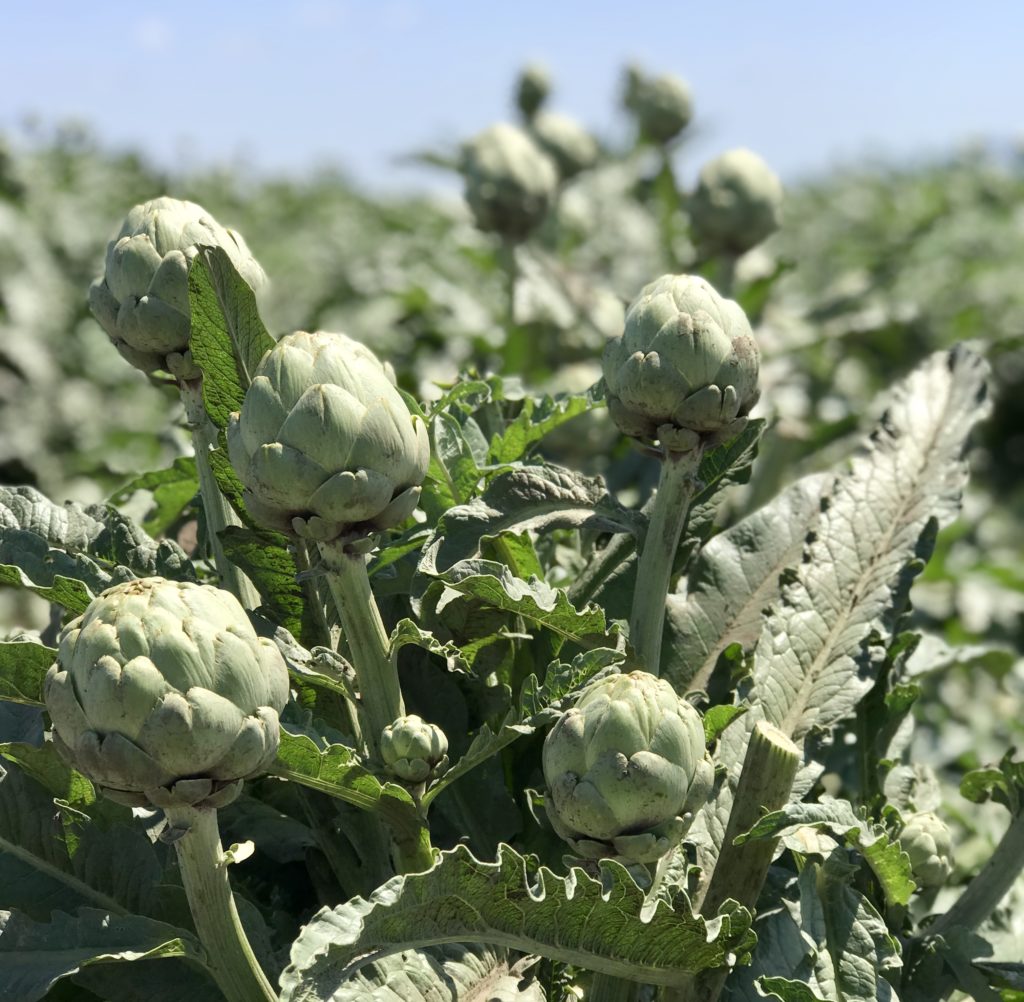Produce safety, sustainability and consumer health are top priorities for those in the food and farming industry. I’m sharing facts from the farm and key takeaway’s from my trip to Monterey & Salinas Valley California.

A few weeks ago, I was with some of my dietitian colleagues for the Facts, Not Fears: Produce Safety Media Tour in Monterey, California. A huge thanks to the Alliance for Food and Farming for inviting me on this trip, covering my expenses and sponsoring this post so I can share my experience and highlights. I learned way more than I could write, so I’m sharing a recap of what I personally found most interesting and important – including some facts, some fun and some takeaway’s.
My Love Of Traveling
First thing first, you all know I love to travel. I had never been to Monterey so I was super excited to arrive! Work trips are always more enjoyable when they take you to beautiful places. This was no exception.

The purpose of the media tour was to learn more about farming, food safety and sustainability – as it relates to produce. These are all topics that I care deeply about, so I was thrilled to be part of the conversation. Plus, I’m a visual learner, so learning in the field is much more appealing to me than reading about it. This produce safety media tour was just that – we spent the entire first on farms.
We walked the fields during the harvest of strawberries, artichokes, celery, Romaine, and Iceberg lettuce, observing, learning and asking tons of questions. Our group was small, but mighty – and definitely not shy when it came to finding out information. If you’ve ever been around a group of science-based media dietitians, you know what I mean. We were told that no question was off limits, and believe me, we left no questions behind.
The second day we attended a produce safety tour, followed by a 3- hour round table discussion. I share more details on those below, but first, I want to share some photos and facts from each of our farm tour stops.
{This is a long post, so if you’re short on time, be sure to scroll down to my three take-out messages before leaving. They are important, and tips that I really want you to know.}
Day One – Farm Tours
First Stop – The Strawberry Fields

California has an ideal climate for growing strawberries and they produce them year round. That fact alone is fascinating to me. I live in Pittsburgh, so the idea of having fresh, locally grown strawberries all year long is a dream. One of the most fascinating things I learned – at all of the farms I visited – is how much they rely on manual labor. All California strawberries are hand-picked to ensure that the highest quality berries are harvested.
Heat and moisture can destroy strawberry plants. To improve the growing process, they are grown on beds that are raised and covered with plastic mulch, since A drip irrigation system delivers water directly to the root of the plant, keeping moisture away from the fruit while using water more efficiently.

- Strawberry Food Safety Highlight: California strawberry farmers lead the world in research dedicated to reducing pesticide use and sustainable farming practices. The California Strawberry Commission offers a comprehensive food safety program for growers, ranch managers, field supervisors and other farm-level employee with food safety responsibilities. The program teaches key food safety practices necessary to minimize the risk of microbial contamination. In 2010, these efforts were recognized with the NSF International Food Safety Award.

- Fun Fact: Strawberries are harvested then packaged directly on the farm, then rushed to a cooling facility. Once cooled, they are loaded onto refrigerated trucks that same day for delivery.

If you follow my recipes, you probably know how much I love strawberries. They taste great in smoothies and even salads.
Second Stop – Romaine
The second stop on our farm road trip was to the Romaine fields. I was especially interested in this trip, since green leafy vegetables, like Romaine and Spinach, tend to get more food-borne illness attention than other veggies. A few years ago, I did a TV interview with KDKA Pittsburgh about this topic, encouraging consumers to practice safe food-handling hygiene once they get produce into their hands.

I asked tons of food safety questions while on this tour. While the exact cause of the outbreaks is uncertain, two potential causes are surface water and animal in the fields. The long open leaves and intricate layers leaves more area for bacteria to hang out – if in fact it came in contact with something. There’s a lot of work going on behind the scenes to reduce this risk in Romaine, but it is still important to rinse well before eating.

- Romaine Sustainability & Food Safety Fact: Romaine (as well as some other Green leaf and other types of lettuce) is harvested with a water jet harvester, which increases yield and product shelf life while reducing labor costs. Using that type of mechanical harvester is more sanitary, and a more sustainable method of harvesting lettuce.
- Fun Fact: If you stand too close to a water jet harvester while it is in action, you will likely get sprayed with soil and greens. I learned the hard way not to wear white shoes on the farm. (what was I thinking!)

Next Stop – Celery
I’m going to be really honest here – I don’t love celery. My kids don’t like it, and Brian doesn’t eat it either. Despite how much flavor it adds to food, most of the time, I omit it from recipes. I did enjoy visiting the farm, though. In fact, watching celery being harvested was super cool – but very labor intensive.

The employees stand in a long row, and work with unbelievable teamwork to go at the same pace. They use a machete- like knife to cut each celery plant one-by-one, then rinse it, and toss it into the truck. From there, another employee collects it, boxes it and stacks it for delivery. Watching this process in action was fascinating.

The most memorable experience from this farm visit was the smell. The smell of fresh celery filled the air as we walked through the fields. It was pretty amazing!
- Celery Sustainability/Food Safety Fact: The photo above (of my feet in the celery field) is after harvest. Notice all of the celery leaves left in the field. As a person passionate about food waste, I had lots of questions about why they would leave these beautiful leaves behind. Surely, there was something they could do with them. Come to find out, they have a purpose. They get tilled back into the soil to nourish the next plant.

- Fun Fact: A farmer explained to us that the employees are so skilled, they could basically cut the bunches of celery to the perfect length each time while blindfolded.
Onward, To Artichokes
At last, we get to my favorite farm experience – the artichokes. I couldn’t wait to see this harvest in action.

This process is what you call hard-core manual labor. These workers carry bins on their back. As they pick the artichokes, they toss them in and move to the next.

I really wanted to try carrying one of the bins to get the full experience, but I saw some of the other men struggling to walk with it on. I decided it was best for my back if I just took some pictures instead. Would you want that job? I know I’m in the minority, but I would love it. I’d take working outside in a field any day. Especially, over a desk job.
- Artichokes Sustainability/Food Safety Fact: Ocean Mist Farms, the largest grower of fresh artichokes in North America, is committed to environmental stewardship and sustainability.They have extensive water conservation practices in place to assure safety and sustainability. A few practices that they have adopted are the use of recycled water to irrigate crops, using drip irrigation and soil moisture sensors to avoid overwatering. They also use vacated waterways to improve the water quality.

- Fun Fact: If left unpicked, an artichoke buds to expose the most vibrant, spectacular purple flower (see photo above.) I wanted to take it home with me!
Last Stop – Iceberg lettuce
The last stop on this produce safety tour was to the Iceberg lettuce fields. I only have one photo from this stop. It was late in the day and my phone was at 2%. It would have died even sooner, if it wasn’t for my good friend Melissa lending me her extra charger a few hours earlier.

The harvest of Iceberg is similar to celery. It is labor intensive. The farm employees use a knife to hand-cut the lettuce heads from the plant.
- Iceberg Lettuce Sustainability/Food Safety Fact: You can see from my picture above that the outer leaves, the stem and the core of the Iceberg lettuce head is left in the field. As with some of the other vegetables, the unused parts of the plant get tilled back into the soil and provide a source of nourishment for the next crop that is planted.
- Fun Fact: I don’t eat a lot of Iceberg lettuce, but I jumped at the chance to taste it fresh from the farm. It was definitely better than I remember. It had a slightly sweet taste to it.
Day 2 – Produce Expo and Round Table Discussion
Our produce safety media tour coincided with Markon’s annual food service meeting, so on the second day, we had an opportunity to attend their produce expo. We spent the morning learning some of the new, innovative ways that produce is being grown and packaged, specifically for food service establishments.

Be on the look-out for individual packages of washed, ready-to-eat grapes and celery sticks. These items are perfect for school-aged kids and parents who pack lunches.

We also learned about seedless lemons that are being grown specifically for restaurants. I’ll be honest, at first, I couldn’t understand the purpose. Do we really need a seedless lemon? But, after hearing one of the buyers for a huge seafood restaurant chain share his story, I understood. Apparently, people don’t like it when they squeeze their lemon and a seed shoots out onto their fish. Seedless lemons solve that problem.

The second half of day two was spent in the conference room. Our group joined a collection of food scientists, biochemists, food toxicologists and others that work in the food and farming industry for a 3-hour round table discussion. We continued our conversation about growing and delivering safe produce, and the importance of getting consumers to eating of it. I was thrilled to have a seat at the table with others that share my passion for growing nourishing, safe food in a sustainable way. Especially, when it comes to fruits and vegetables. Produce is the only food group that health experts agree we should eat more of every day for better health and a longer life. You can read more about that here.
That brings me to my take-home points about food safety, sustainability and health.
TAKE AWAY MESSAGE & TIP #1:
Produce Safety & Sustainability Are A Priority For Farmers – Do Your Part, Too.
The United States has the safest food supplies in the world. Yet, there are lots of questions and concerns about farming practices – especially when it comes to pesticides, water supply, the health of farmers and the employees that work on the farms. I touched on some of those practices in this post, but there is so much more being researched and tested. There’s also a lot being done to assure that we can produce enough high-quality food to feed our growing population.
I was so impressed by how important sustainability is to farmers, and how much thought goes into creating sustainable farming practices. Many people do not realize it, but one of the biggest impacts on sustainability is food waste. If you want to do your part to be sustainable, be mindful of how much food you purchase and prepare. And, think of ways you can use leftovers and parts of produce that you don’t need for a recipe. That’s one of the main reasons why I suggest taking your leftovers home. It has way more to do than overeating.
TAKE AWAY MESSAGE & TIP #2:
Eat More Produce For Better Health and Happiness
According to the Center for Disease control, only 1 in 10 Americans eat enough fruits and vegetables in a day. Does anyone else find that staggering? I don’t care if you choose produce that is organic, conventional grown, bright colored or white – eat more! Studies show that people who eat more fruits and vegetables each day can reduce their risk of certain chronic diseases. And, if that’s not enough, eating more produce might make you a happier person! A peer reviewed study showed that mental wellbeing rose in accordance with the amount of fruits and vegetables consumed in a day. You can read more about that study here.
TAKE AWAY MESSAGE & TIP #3:
Eat Produce While Having Fun
I was joined on this trip by a fabulous group of dietitians who also care about health, wellness and produce safety. And, while we’re all passionate about food and nutrition, we are also all passionate about having fun. We managed to squeeze a boat load of it into the few days that we were together – from biking the coast, to visiting the Monterey Bay Aquarium, to eating great food and even visiting the beach.

(not pictured but with our crew is Carrie)
I left feeling so proud of our food supply and so thankful to the farmers that work hard every day to put safe food on our table.
That leads me to my final questions – Have you thanked a farmer lately?
I posted about this tour on my Instagram stories during my visit, but if you’re reading this post after it’s published, its unlikely you saw them. Feel free to leave me a comment below wif you’re interested in the videos, and I will provide you with information on where you can view the harvest, and/or learn more about it.
Questions or comments about this post or produce safety? Please share them in the comments below.


 Hi, I’m Heather – a registered dietitian, busy mom, consultant, adventure junkie and travel addict who has mastered living healthy on the go. My blog is where I share simple recipes and healthy living tips to help and inspire others to live their best life.
Hi, I’m Heather – a registered dietitian, busy mom, consultant, adventure junkie and travel addict who has mastered living healthy on the go. My blog is where I share simple recipes and healthy living tips to help and inspire others to live their best life.
I can almost taste that strawberry! Great blog!
Thank you!Amazing how fresh it tastes straight from the farm.